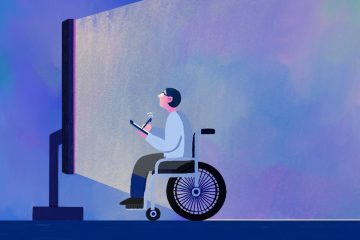Credit card debt has become a common issue in today’s high-tech, almost cashless world. Many misuse this financial tool because of instant gratification and convenience, causing many to be buried in debt and be financially unwell.
If this is your problem, the good news is that credit card debt is manageable. It’s not easy, but it can be done, and it can become easier if done earlier. To do that, here are some steps that will help you handle credit card debt and pave the way to a more secure financial future.
Step 1: Assess Your Current Financial Situation
Before getting into any specific debt repayment strategies, you must first understand your financial standing. Begin by calculating the total amount of credit card debt you owe. Review your credit card statements to identify interest rates and minimum payments. At the same time, assess your monthly income and expenses. This will be the core of your debt management strategy and the basis of your decisions.
Step 2: Stop Using Your Credit Cards
The first rule of getting out of a hole is to stop digging. You should not use your credit cards to avoid more debt. Instead, use debit cards for your purchases. This change in payment method will also change the way you spend. A conscious shift in spending habits is pivotal in regaining control of your financial situation.
Step 3: Create a Repayment Strategy
When it comes to debt repayment, there are two well-known methods you can use. First is the Avalanche Method, which involves paying the minimum on all debts and then using the rest of the money on the debt with the biggest interest rate. Second is the Snowball Method, which pays off the smallest debts first. Choose whichever strategy fits in best with your financial mindset and goals.
Step 4: Negotiate with Creditors
Don’t be afraid to communicate with credit card companies. Contact them and inform them that you are in a predicament, and try to negotiate with them for more favorable repayment terms or lower interest rates if possible. To help your case, provide proof of your current financial difficulties. Creditors often prefer a debtor who is honest and willing to make an effort to repay than someone who defaults and runs from debt altogether.
Step 5: Consolidation and Balance Transfer
One way to speed up your credit card payment is debt consolidation. This makes payment more convenient by combining all your debt into one payment. Look for the best money lender to arrange this loan for you.
Alternatively, you may also avail of transfer offers, which let you move high-interest credit card balances to a card with a promotional 0% APR period. However, be wary of balance transfer fees and pay off the balance before the promotional period ends.
Step 6: Create a Realistic Budget
You need to budget for both debt repayment and basic needs when paying off credit card debt. After that, check out which non-essentials you can cut down on to free up extra money. You can then add it to the funds used for debt repayment.
Step 7: Increase Your Income Sources
If you can increase your source of income, then, by all means, do so. Get additional cash by getting a side job or doing freelance work, and allocate this to the payment of your debt. This way, you are able to free yourself from debt at a faster rate if, at the same time, you lower your expenses for living.
Step 8: Track Your Progress
Keep a close eye on your progress. Celebrate the milestones you hit, such as paying off a specific card or reaching a certain percent of your debt to be paid back. You can also regularly review your credit card bills and watch them shrink.
Step 9: Seek Professional Help if Necessary
If you’re overwhelmed by your credit card debt, seek help from professionals such as credit counseling agencies and financial advisors. They will help you get through difficult and complicated financial scenarios. Their insights will aid you in creating personalized strategies that will help you pay off your financial obligations.
Step 10: Be Disciplined and Patient
Paying off credit card debt is not a sprint but a marathon. Think of each step as a building block toward freedom from unnecessary debt. Be disciplined and patient, especially at times when the budget is tight. It will pay off big time once you no longer have credit card debt.
Conclusion
If you have a sizable credit card debt, the best time to pay it is now. For this, you need discipline, strategy, and determination. By assessing your financial situation, implementing a well thought-out repayment strategy, and making conscious choices to reduce expenses and increase income, you can get out of your debt predicament.




